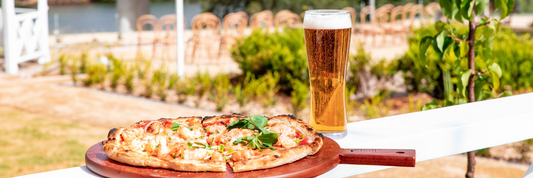Wine, a timeless beverage enjoyed by cultures worldwide, has an intricate and fascinating journey from vine to bottle. Whether you're a novice wine enthusiast or an experienced connoisseur, understanding the art of winemaking deepens your appreciation of every sip. This article explores the step-by-step process of how wine is made, along with fascinating variations and tips for wine lovers.
What is Winemaking?
Winemaking, also known as vinification, is the process of transforming grapes into wine through a series of careful steps. This ancient craft has been practiced for thousands of years, blending science and art to produce a beverage that symbolizes celebration, relaxation, and tradition.

A Brief Overview of the Winemaking Process
At its core, winemaking involves harvesting grapes, fermenting their juice, and aging it to perfection. The methods may vary depending on the type of wine—red, white, rosé, or sparkling—but the principles remain consistent.
The History of Winemaking
The origins of wine can be traced back to around 6000 BCE in regions like Mesopotamia and the Caucasus. Over centuries, winemaking techniques evolved, influenced by geography, climate, and culture. Today, modern technology complements traditional methods, allowing winemakers to achieve consistent quality and flavor.

Key Ingredients in Winemaking
Grapes – The Heart of Wine
Grapes are the foundation of wine, and their type greatly influences the flavor and character of the final product.
- Red grapes like Cabernet Sauvignon or Merlot create robust, full-bodied wines.
- White grapes such as Chardonnay or Sauvignon Blanc produce crisp and refreshing wines.
- Terroir—a term encompassing soil, climate, and region—shapes the unique qualities of each grape variety.
Other Essential Ingredients
Yeast: Converts the grape's natural sugars into alcohol during fermentation.
Acidity and Sugar: Balancing these elements ensures the wine is neither too tart nor too sweet.
Step-by-Step Winemaking Process
1. Harvesting
Winemaking begins with grape harvesting, which can be done manually or with machines. Timing is crucial, as the ripeness of the grapes affects the flavor and sugar content of the wine.
2. Crushing and Pressing
Once harvested, grapes are crushed to release their juice.
- For red wine, the skins and seeds are left with the juice to extract color and tannins.
- For white wine, the juice is separated from the skins and seeds immediately.

3. Fermentation
Fermentation is where the magic happens.
- Yeast is added to the grape juice, turning sugars into alcohol and carbon dioxide.
- Depending on the desired style, fermentation can last several days to weeks.
4. Aging
After fermentation, the wine is aged to develop its flavors.
- Barrel Aging: Oak barrels add rich, complex flavors like vanilla and spice.
- Stainless Steel Aging: Retains a fresh, clean profile, often used for white wines.
5. Bottling and Packaging
Finally, the wine is filtered, bottled, and sealed for distribution. Proper packaging ensures the wine remains fresh and protected until it reaches your glass.
Differences Between Red, White, Rosé, and Sparkling Wines
Red Wine: Fermented with skins and seeds, giving it a rich color and tannic structure.
White Wine: Made without skins, resulting in a lighter, fruitier profile.
Rosé: Partial skin contact gives it its signature pink hue.
Sparkling Wine: A secondary fermentation creates bubbles, as seen in Champagne.
Types of Wine: Discover Different Styles and Perfect Pairings
Organic vs natural wine
Sustainable winemaking practices are growing in popularity.
- Organic Wine: Made from grapes grown without synthetic pesticides or fertilizers.
- Natural Wine: Minimal intervention, relying on natural yeast and limited additives.
Visual Guide to the Winemaking Process
To simplify the process, here’s a visual flow of how wine is made:
- Grapes are harvested.
- Grapes are crushed and pressed.
- Juice undergoes fermentation.
- Wine is aged in barrels or tanks.
- Bottling and packaging complete the process.
Including infographics or photos enhances the learning experience and makes the steps more relatable.
Common Questions About Winemaking
How long does it take to make wine?
Depending on the type, winemaking can take anywhere from a few months (for fresh white wines) to several years (for premium reds and sparkling wines).
Can wine be made without adding yeast?
Yes, some winemakers rely on natural yeast found on grape skins for fermentation, a practice common in natural winemaking.
What is the role of sulfites in wine?
Sulfites act as preservatives to prevent oxidation and bacterial growth, ensuring the wine stays fresh during storage.
Why Understanding the Winemaking Process Enhances Your Appreciation of Wine
Knowing how wine is made connects you to its craftsmanship. Understanding each step—harvesting, fermentation, and aging—gives you insight into the flavors and textures you experience in the glass.
Tips for Choosing Wine
- Explore wines from regions with unique terroirs.
- Look for labels detailing the winemaking process to discover what resonates with your palate.
Conclusion
The art of winemaking is a beautiful blend of tradition, science, and passion. From grapevine to bottle, every stage contributes to the character of the wine in your glass. Whether you’re savoring a bold red, a crisp white, or a sparkling celebration, understanding how wine is made deepens your appreciation for this remarkable craft.







